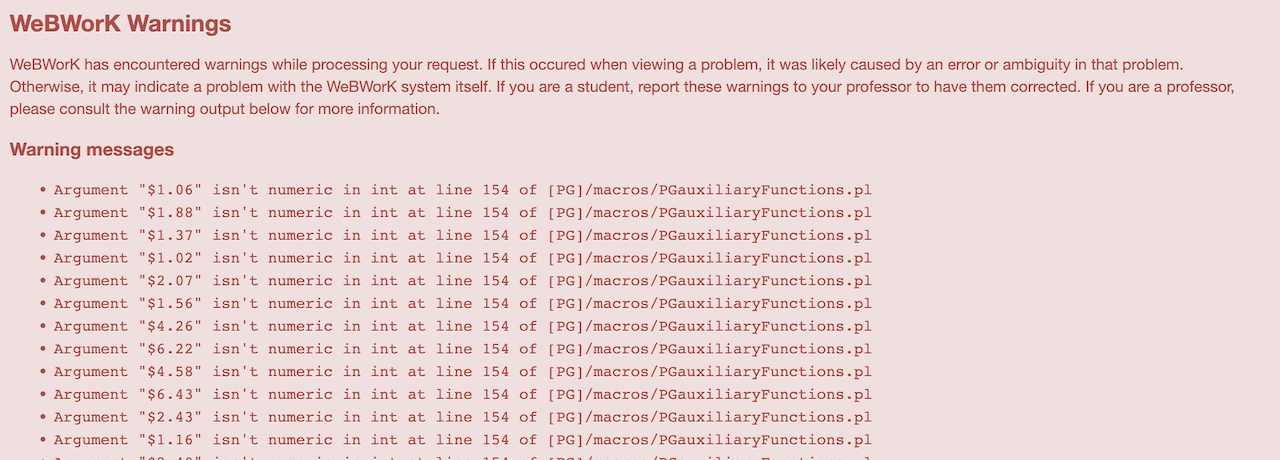Here is the code. error is attached. Any help is appreciated.
DOCUMENT(); # This should be the first executable line in the problem.
loadMacros(
"PGstandard.pl", # Standard macros for PG language
"MathObjects.pl",
"PGML.pl",
"contextCurrency.pl",
"PGcourse.pl",
);
TEXT(beginproblem());
Context("Currency");
$showPartialCorrectAnswers = 1;
do{$a = Currency(random(4,15,0.1));
do{$b = Currency(random(4,15,0.1));} until ($b!=$a);
$x = random(1,50,1);
$y = random(1,50,1);
$n = $x+$y;
$m = ($a*$x+$b*$y)/$n;
} until (gcd($a*$x,$b*$y) == $n);
BEGIN_PGML
Julia and her husband own a coffee shop. They experimented with mixing a City Roast Columbian coffee that cost [$a] per pound with French Roast Columbian coffee that cost [$b] per pound to make a [$n]-pound blend. Their blend should cost them [$m] per pound. How much of each type of coffee should they buy?
Julia and her husband should mix [________]{$x} pound of the city Roast Columbian coffee, and [________]{$y} pound of the French Roast Columbian coffee to make [$n]-pound blend.
END_PGML
ENDDOCUMENT(); # This should be the last executable line in the problem.
